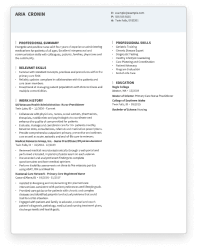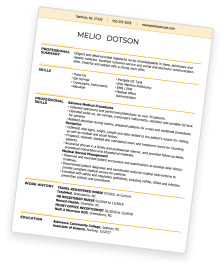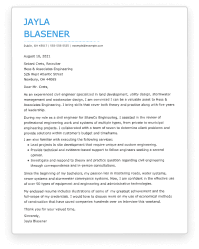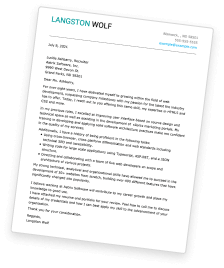College Student Resume: Overview
Crafting an impactful college student resume is your gateway to showcasing your potential and gaining an edge in competitive academic and professional landscapes. Your college student resume should encapsulate:
- Relevant Skills and Achievements: Highlight the skills and accomplishments acquired through coursework, projects, and extracurricular activities that directly align with your desired career path.
- Educational Background: Present your educational journey, including your degree, major, university, graduation date, and any honors that underscore your commitment to learning.
- Experience: Showcase internships, part-time jobs, volunteer work, or any practical experiences that contribute to your qualifications.
- Projects and Accomplishments: Include projects and notable achievements that demonstrate your value, impact, problem-solving abilities and initiative.
- Objective or Summary: Craft a succinct yet impactful objective or summary that reflects your aspirations and highlights the unique qualities you bring to potential roles.
You will need to effectively engage recruiters and hiring managers by presenting your qualifications in the best way possible on your resume. With our resume examples for college students, you can begin to see how this can be achieved.
For more options, explore our entire collection of downloadable resume examples and our free and premium resume templates to help you achieve your professional and academic dreams!
College Student Resume Example: Marketing Intern
This exemplary college student resume demonstrates effective content organization and alignment with the field’s requirements. Use a similar approach to compellingly present your skills, experiences, and achievements.
-
Creative Design:
The resume's layout employs a modern design with a clean and organized structure, enhancing readability and visual appeal.
-
Relevant Work Experience:
Three different work experience entries highlight the candidate's marketing internships, showcasing their practical skills and contributions.
-
Achievements Showcase:
Accomplishments in each role are emphasized, demonstrating the candidate's impact and capabilities.
-
Clear Section Headings:
The left-hand column provides clear section headings, guiding the reader through the resume's content effortlessly.
College Student Resume Example: Healthcare Major
This standout college student resume showcases the candidate’s adaptability and dedication to both academic and extracurricular pursuits. By following a similar approach, you can create a compelling resume that resonates with employers and academic institutions.
-
Traditional Design:
This resume adopts a classic design, suitable for showcasing professionalism and academic achievements.
-
Volunteer Experience:
Limited professional experience is compensated with detailed descriptions of volunteer work, highlighting transferable skills.
-
Academic Achievements:
Academic honors, awards, and GPA showcase the candidate's dedication and performance.
-
Resume Objective:
A concise resume objective statement provides an overview of the candidate's aspirations and strengths.
How To Write a College Student Resume: A Step-by-Step Guide
Crafting an impactful college student resume is a critical step in showcasing your abilities and experiences as you transition into the professional realm. Follow these comprehensive steps to create a standout resume that effectively highlights your unique qualifications and potential:
-
Contact Information:
Start your college student resume by providing accurate and up-to-date contact information. Include your full name, active phone number, professional email address, and a link to your LinkedIn profile, if available. Clear and correct contact details ensure that potential employers can easily reach out to you.
-
Objective or Summary:
Begin your resume with a concise and well-crafted objective or summary statement. Tailor this section to the specific job you're applying for, highlighting your career goals and showcasing your key strengths and skills. Whether you're focusing on an objective that outlines your career ambitions or a summary that emphasizes your qualifications, make sure it aligns with the employer's needs.
-
Relevant Skills:
Highlight a mix of both hard and soft skills that are directly relevant to the job you're targeting. Hard skills could include technical proficiencies, programming languages, or software knowledge. Soft skills encompass communication, teamwork, problem-solving, and adaptability. Tailor your skillset to match the specific qualities the employer is seeking.
-
Education:
Detail your educational background, including the college or university you're attending, your major or program, anticipated graduation date, and any academic honors or awards you've earned. This section provides employers with insight into your academic foundation and dedication to learning.
-
Work Experience:
Outline any relevant work experiences, internships, or part-time jobs you've held. Include the company name, your job title, dates of employment, and a concise description of your responsibilities and achievements. Utilize bullet points to succinctly communicate your contributions and impact in each role.
-
Projects and Achievements:
Highlight any noteworthy projects, accomplishments, or initiatives you've been involved in. Describe the challenges you faced, the strategies you implemented, and the outcomes you achieved. Whenever possible, quantify your achievements with metrics to demonstrate your effectiveness.
-
Volunteer Work and Extracurriculars:
Include any volunteer work, community service, or extracurricular activities you've participated in. These experiences showcase your commitment to giving back and your ability to balance various responsibilities. Describe how your involvement has contributed to your personal growth and skill development.
-
Coursework and Academic Achievements:
List relevant coursework that aligns with the job's requirements. Highlight specialized knowledge or skills you've gained through your studies. Additionally, mention any academic achievements, scholarships, research projects, or presentations that demonstrate your academic prowess and dedication.
-
Certifications and Training:
If you've completed certifications, workshops, online courses, or training programs related to the job, include them in this section. Certifications validate your skills and dedication to professional development, enhancing your appeal as a candidate.
Key Skills for College Student Resumes:
When composing your college student resume, showcasing the right set of skills is paramount to capturing the attention of potential employers. Here’s a breakdown of the essential hard skills, soft skills, and certifications that can elevate your resume and make it stand out in a competitive job market:
Top 5 Hard Skills for College Students
- Technical Proficiency: Showcase your mastery of relevant software and tools that are widely used in your field. Proficiency in software such as Microsoft Office Suite, coding languages, design applications, or data analysis tools can significantly enhance your resume.
- Data Analysis: Highlight your ability to analyze and interpret data to extract meaningful insights. Proficiency in tools like Excel, data visualization software, or statistical analysis platforms can set you apart.
- Language Skills: If the job requires language proficiency, emphasize your fluency in multiple languages or your translation capabilities, showcasing your cross-cultural communication abilities.
- Research Skills: Highlight your prowess in conducting thorough research using online databases, academic journals, and other sources. This skill demonstrates your capability to gather and present information effectively.
- Project Management: Illustrate your organization and time management skills by mentioning any experience in planning, executing, and coordinating projects. This showcases your ability to manage tasks with precision and meet deadlines.
Top 5 Soft Skills for College Students:
- Communication: Emphasize your aptitude for clear and effective communication through written, verbal, and nonverbal means. Strong communication skills are valuable in any professional setting.
- Team Collaboration: Highlight your ability to work harmoniously within a team, contribute ideas, resolve conflicts, and achieve shared goals with your colleagues.
- Problem-Solving: Showcase your analytical thinking and creative problem-solving abilities. Provide examples of situations where you identified challenges and devised innovative solutions.
- Adaptability: Demonstrate your flexibility in adapting to change and quickly learning new skills. This showcases your ability to thrive in dynamic work environments.
- Time Management: Illustrate your capacity to prioritize tasks, meet deadlines, and efficiently manage multiple responsibilities, indicating your readiness to handle the demands of the role.
Top 5 Certifications for College Students:
- Field-Specific Certifications: Highlight certifications directly related to your field of study or the job you’re applying for. Examples include Google Analytics certification for marketing or AWS certification for IT roles.
- Project Management Certification: Showcase your commitment to structured work processes with certifications like PMP (Project Management Professional) or CAPM (Certified Associate in Project Management).
- Language Proficiency Certifications: If language skills are relevant, present certifications such as TOEFL or IELTS to validate your linguistic abilities.
- Technical Training Certificates: Highlight workshops, online courses, or coding bootcamps that align with the technical requirements of the job.
- Leadership and Soft Skills Workshops: Mention workshops or certifications focused on leadership, teamwork, or emotional intelligence to highlight your holistic professional development.
Helping Job Seekers Like You
12 Tips For Writing a College Student Resume
Crafting a compelling college student resume requires careful attention to detail and a strategic approach. Here are essential tips to help you create a standout resume that effectively highlights your potential, even if you have limited work experience:
- Emphasize Relevant Coursework: If you lack extensive work experience, focus on showcasing relevant coursework that aligns with the job you’re applying for. Highlight projects, assignments, and subjects that demonstrate your expertise in key areas.
- Showcase Transferable Skills: While you may not have direct professional experience, you likely possess transferable skills gained from extracurricular activities, volunteering, or part-time jobs. Highlight skills such as leadership, communication, problem-solving, and teamwork.
- Highlight Internships, Part-Time Jobs, and Volunteering: Even if your work history is limited, emphasize any internships, part-time positions, or volunteer roles you’ve undertaken. Describe your responsibilities, accomplishments, and skills acquired during these experiences.
- Leverage Extracurricular Activities: Your involvement in clubs, organizations, sports teams, or community service can demonstrate your proactive nature and well-roundedness. Mention leadership roles, achievements, and any impact you’ve made through these activities.
- Spotlight Academic Achievements: Include honors, awards, scholarships, and relevant projects that showcase your dedication to your studies and your field of interest. This can help compensate for the lack of professional experience.
- Tailor Your Resume: Customize your resume for each application by highlighting experiences and skills that align with the specific job requirements. Research the company and role to understand their needs and emphasize how you can fulfill them.
- Optimize Your Objective: Craft a concise objective statement that clearly outlines your career goals and what you bring to the table. Tailor it to the position and use keywords from the job description.
- Quantify Achievements: Whenever possible, use quantifiable achievements to demonstrate your impact. Whether it’s the number of projects completed, events organized, or people reached, quantifying your accomplishments adds credibility.
- Include Relevant Keywords: Incorporate industry-specific keywords and phrases from the job description in your resume. This can help your resume pass through applicant tracking systems (ATS) and increase your chances of being noticed.
- Design and Format: Opt for a clean and professional layout that enhances readability. Use clear headings, bullet points, and consistent formatting. Prioritize white space and ensure your resume doesn’t feel cluttered.
- Seek Feedback: Before finalizing your resume, share it with professors, mentors, or career advisors. Constructive feedback can help you identify areas for improvement and ensure your resume is polished and effective.
- Proofread Carefully: A well-written and error-free resume is crucial. Proofread your document multiple times to catch spelling, grammar, and formatting mistakes. A professional resume reflects attention to detail.
By implementing these tips, you can create a college student resume that effectively communicates your skills, potential, and enthusiasm for the position. Remember that your resume is a dynamic document that can evolve as you gain more experiences and achievements in your academic and professional journey.


Save Time With Our Resume Builder
Key Takeaways
Tailored Presentation: Customize your college student resume to spotlight your abilities, even if work experience is limited. Emphasize relevant coursework, transferable skills, internships, and academic achievements.
Transferable Skills: Highlight skills gained from volunteering, part-time roles, and extracurriculars. Soft skills like leadership, communication, teamwork, and problem-solving can offset limited experience.
Targeted Customization: Align each resume with job requirements by using keywords from the job description. This optimizes visibility for recruiters and applicant tracking systems.
Quantifiable Impact: Showcase achievements with numbers whenever possible. Tangible results add weight to your contributions and capabilities.
Professional Formatting: Employ a clean, organized layout with clear headings and bullet points. Consistent formatting enhances readability and creates an appealing document.
Additional Resources
Save Time With Our Cover Letter Builder






